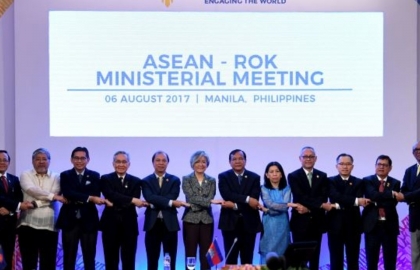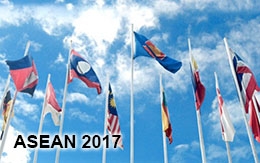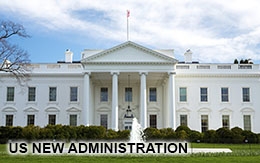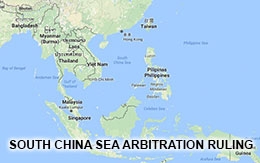How can the Republic of Korea promote a trilateral ROK-ASEAN-U.S. alignment?
The geopolitical landscape of the Indo-Asia-Pacific is changing considerably, marked by growing strategic competition between major powers, particularly the U.S. and China, at the time of the mysterious Covid-19 pandemic spreading worldwide.

Inheriting the previous Administration’s free and open Indo-Pacific strategy (FOIPS), the Biden Administration continues adopting a hard-line approach towards China. The U.S. not only continues contesting against China on defense and security, trade, technology, South China Sea and Taiwan, but also places higher pressure on China on issues of democracy and human rights such as Hong Kong and Xinjiang.
Especially, the Biden Administration takes the lead to advance a like-minded coalition through quadrilateral arrangement with Japan, India, and Australia (QUAD) to constrain China to behave in a rules-based international order in the region, particularly in the maritime domain.The European Union and several major European countries such as the United Kingdom, Germany, France, and the Netherlands also develop their own strategies towards the region, which do not entirely echo the U.S.’ FOIPS, but share some important elements, especially preserving an open, inclusive, rules-based and multilateral order in the Indo-Pacific. They also explicitly or implicitly express concerns about the rise of Chinese sphere of influence in the region, and its destabilising actions and weakening of UNCLOS in the South China Sea.
In response, China attempts to develop its own sphere of influence, particularly in economic terms. Beijing increases the frequency of in-person shuttle diplomacy towards the developing world, including Southeast Asia, offering Covid-19 vaccine, infrastructure investment under the Belt and Road Initiative, and post-pandemic supply chain.
In the short term, this move may help China gradually improve its image as a generous and responsible country while the U.S. limits vaccine export to meet the need of its home market first. In the long run, with RCEP in place, it may help China establish its central role in global supply chain and reduce the regional dependence on American economy.
Although the U.S.-China strategic competition may not lead to a zero-sum situation, in which one of them will collapse like what happened during the Cold War, it creates tough challenges facing the medium and smaller powers in the region like the Republic of Korea (ROK) and ASEAN. Despite being a U.S.’ ally, the ROK may potentially be marginalized while the U.S. is investing more in QUAD and the like. ASEAN’s relevance and centrality in shaping regional architecture might be challenged since both powers are seeking to create their own spectrum.
ROK-ASEAN-US alignment
Fortunately, the ROK made a wise move with President Moon Jae-in’s visit to Washington D.C. on May 21, 2021. The visit not only helped revitalize the ROK-U.S. alliance, but also paved way for Seoul to play a more proactive role in regional affairs.As stated in the joint statement, the ROK-U.S. relationship “extends far beyond the Korean Peninsula” and two countries will work to “align the ROK’s New Southern Policy and the U.S.’ vision for a free and open Indo-Pacific”, and “support for ASEAN centrality and ASEAN-led regional architecture”.
Accordingly, the ROK can go beyond its economic and cultural engagement with the region and help ASEAN promote cooperation with the U.S. on some important issues.Firstly, the ROK can collaborate with the U.S. and ASEAN to solidify a multilateral system in the Indo-Asia-Pacific. In which, the ROK and ASEAN countries will not be forced to choose sides between the U.S. and China or completely fall into either power’s orbit. They will enjoy autonomy and have sufficient room to maneuver and diversify their foreign relations.
Secondly, the ROK can join coordinated efforts by the U.S. and ASEAN to maintain a peaceful, stable, and ruled-baser order in the region, including the South China Sea, making sure that tension will not get out of control and lead to an armed conflict. Rather, the disputes must be settled by peaceful means in accordance with international law, without coercion, intimidation or use of force. At the end of the day, it is not the “law of the might” that must prevail, but the “might of the law”.
They can also bolster maritime cooperation in terms of maritime law enforcement, maritime domain awareness, marine environment protection and sustainability of the ocean in accordance with international law and norms. The ROK can work with the U.S. to co-chair some workshops within the ASEAN-led mechanism such as ASEAN Regional Forum (ARF) or Extended ASEAN Maritime Forum (EAMF). Gradually, they can translate the outcomes of the workshop to cooperative projects at sea.
Thirdly, Seoul can join hands with the U.S. and ASEAN on the Mekong sub-region. They engage with CLMTV countries, namely Cambodia, Laos, Myanmar, Thailand, and Vietnam to spark an integrated mechanism which can coordinate different cooperative frameworks to boost transparency, sovereignty, and inclusive growth and help tackle cross-border challenges across the Mekong River basin.
Fourthly, as an Asian economic power harmonizing Asian political culture and Western way of life, the ROK can help foster constructive dialogue between the U.S. and ASEAN on democracy and human rights. These are sensitive issues between the U.S. and most of ASEAN member states, but they should be considered as areas of cooperation through ASEAN frameworks since these issues are common principles laid down in ASEAN Charter adopted in 2007 and ASEAN Community formed in 2015.
Fifthly, the ROK can prompt ASEAN and the U.S. to facilitate positive developments on the Korean Peninsula. ASEAN countries can host the U.S.-DPRK Summits again once the Covid-19 pandemic is effectively controlled and managed. They are willing to provide good venues, facilities, and other genuinely objective assistances to parties concerns to hold dialogues and negotiations to completely denuclearization of the Korean Peninsula in a peaceful manner.
Last but not least, Seoul should take full advantage of Vietnam’s role as a coordinating country of the ASEAN-ROK dialogue relations (2021-2024) to better reinforce the ROK’s engagement with ASEAN in general and advance a ROK-ASEAN-U.S. strategic alignment in particular.
It is useful to note that this type of trilateral arrangement should not be necessarily viewed as a new grouping that seeks to contain China. Instead, it should be open, transparent, inclusive, and helps consolidate and nurture the multipower-centered trajectory in the region.
In summary, major-power strategic competition becomes increasingly intense, and may sideline the important roles of the middle powers like the ROK and ASEAN in evolving regional architecture. To better cope with this situation, the ROK should proactively develop an alignment with ASEAN and the U.S. on regional affairs, which is open, transparent, inclusive, rules-based, ASEAN-centric, and without containing China.
Thuc D. Pham is a PhD candidate and researcher at the Diplomatic Academy of Vietnam. The opinions expressed in the article are those of the author and don’t necessarily represent the views of institutions to which he is attached.










